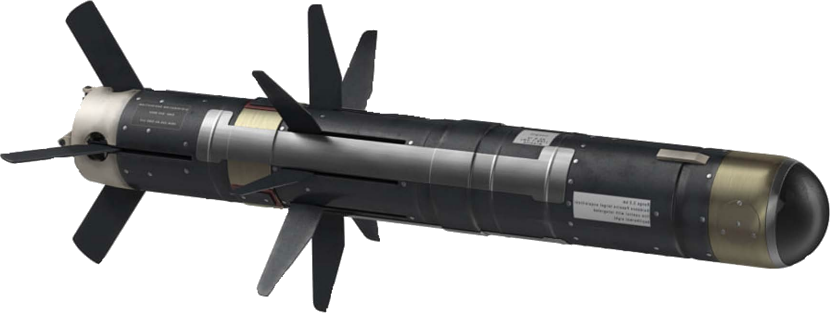
This image has format transparent PNG with resolution 830x313.
You can download this image in best resolution from this page and use it for design and web design.
FGM-148 Javelin PNG with transparent background you can download for free, just click on download button.
The FGM-148 Javelin, or Advanced Anti-Tank Weapon System-Medium (AAWS-M), is an American-made portable anti-tank missile system in service since 1996, and continuously upgraded. It replaced the M47 Dragon anti-tank missile in US service. Its fire-and-forget design uses automatic infrared guidance that allows the user to seek cover immediately after launch, in contrast to wire-guided systems, like the system used by the Dragon, which require a user to guide the weapon throughout the engagement. The Javelin's high explosive anti-tank (HEAT) warhead can defeat modern tanks by top attack, hitting them from above, where their armor is thinnest, and is also useful against fortifications in a direct attack flight.
As of 2019, the Javelin had been used in around 5,000 successful engagements.
Javelin is a fire-and-forget missile with lock-on before launch and automatic self-guidance. The system takes a top-attack flight profile against armored vehicles, attacking the usually thinner top armor, but can also make a direct attack, for use against buildings, targets too close for top attack, targets under obstructions and helicopters.
It can reach a peak altitude of 150 m (490 ft) in top-attack mode and 60 m (200 ft) in direct-fire mode. Initial versions had a range of 2,000 m (6,600 ft), later increased to 2,500 m (8,200 ft). It is equipped with an imaging infrared seeker. The tandem warhead is fitted with two shaped charges: a precursor warhead to detonate any explosive reactive armor and a primary warhead to penetrate base armor.
The missile is ejected from the launcher to a safe distance from the operator before the main rocket motors ignite – a "soft launch arrangement". This makes it harder to identify the launcher, though backblast from the launch tube still poses a hazard to nearby personnel. The firing team may move as soon as the "fire-and-forget" missile has been launched, or immediately prepare to fire on their next target.
The missile system is sometimes carried by two soldiers consisting of a gunner and an ammunition bearer, although one soldier can fire it. While the gunner aims and fires the missile, the ammunition bearer scans for prospective targets, watches for threats like enemy vehicles or troops and ensures that personnel and obstacles are clear of the missile's launch backblast.
During the 2022 Russian invasion of Ukraine, NATO provided thousands of Javelins to Ukraine, where they proved highly effective. Javelins have been responsible for a part of the thousands of armored vehicles Ukraine has destroyed, captured or damaged. An image dubbed "Saint Javelin", which shows Mary Magdalene holding a Javelin launcher in the style of an Eastern Orthodox church painting, gained attraction in social media and soon became a symbol of the Ukrainian resistance against the Russian invasion. An unknown number of Javelin launch tube assemblies were captured by the Russian armed forces during the conflict; it is unclear if any of the captured launchers contained live rounds, or were simply tubes discarded after being used. On 18 March, the Pentagon claimed out of 112 Javelins fired by the Ukrainians since the start of the war, 100 missiles had hit their target.
Concerns are that the US has used up 1/3rd of its stockpile of Javelin missiles. The time it will take to replace them could be years. 7,000 missiles have been supplied thus far. The United States has been buying Javelins at the rate of about 1,000 a year. The current maximum production rate is 6,480 a year, though it would likely take a year or more to reach that level. Once an order is placed, at present it will take 32 months before a missile is delivered. This means that it could take about three or four years to replace the missiles that have been delivered so far. While there are currently more tanks in the Russian Armed Forces than missiles potentially facing them, in Ukraine the missiles outnumber the tanks, and it's unlikely that all Russian tanks would be deployed in-theatre. The missile production rate could be increased greatly with a national procurement effort. Missiles are much easier to produce than tanks.
In this page you can download free PNG images: FGM-148 Javelin PNG images free download